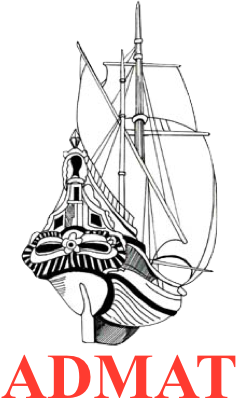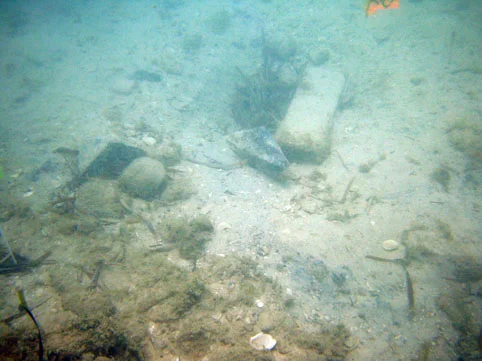Le Dragon Wreck 2018 Project
Iron Ballast Bars
One of the interesting finds of the survey was multiple iron ballast bars. These were of two sizes and each of these rectangular iron bars has two holes in them one at either end. It is assumed that these holes enabled them to be placed in position. There have been very few maritime archaeological surveys which have found them from so early a time frame. At present as there were no inscriptions found on the bars we do not know if they were American or not. We are assuming that they were added when the hull was extended and rebuilt in May 1782
The iron ballast bars were located scattered across the site between the break in the ballast section and the stern area. In fact a number of them were found within the survey grid and some of them were about a meter deep under the surface. In a few squares we found a number of them all at different depths.
During the geophysical survey a number were found as well as two large concretions. These were a number of iron ballast bars which were concreted end on to each other. This formed a very large concretion which was either side of the keel line because they had broken off and fallen below the keel line.
After the individual bars were recorded they were removed from the survey grid and placed on the large concreted sections either side of the keel. This enabled us to remove the large iron objects in the survey area and to sanitise the survey grid of iron targets. However due to time constraints we were unable to finish all the 25 * 1 meter squares. The remaining squares will be surveyed during 2019.
One of the research design questions was to answer why the ballast pile in the front section of the ship survived and why the remainder did not. The simple answer is that the rear of the mast step was destroyed or relocated arround the wreck site in the explosion. However we now hypothesise that the iron ballast bars go under the remaining ballast rocks in the front section in front of the main mast step and as the iron concreted it has formed a container of the ballast rocks, holding them and timbers in place. this hypothesis will be proved in the 2019 survey.























